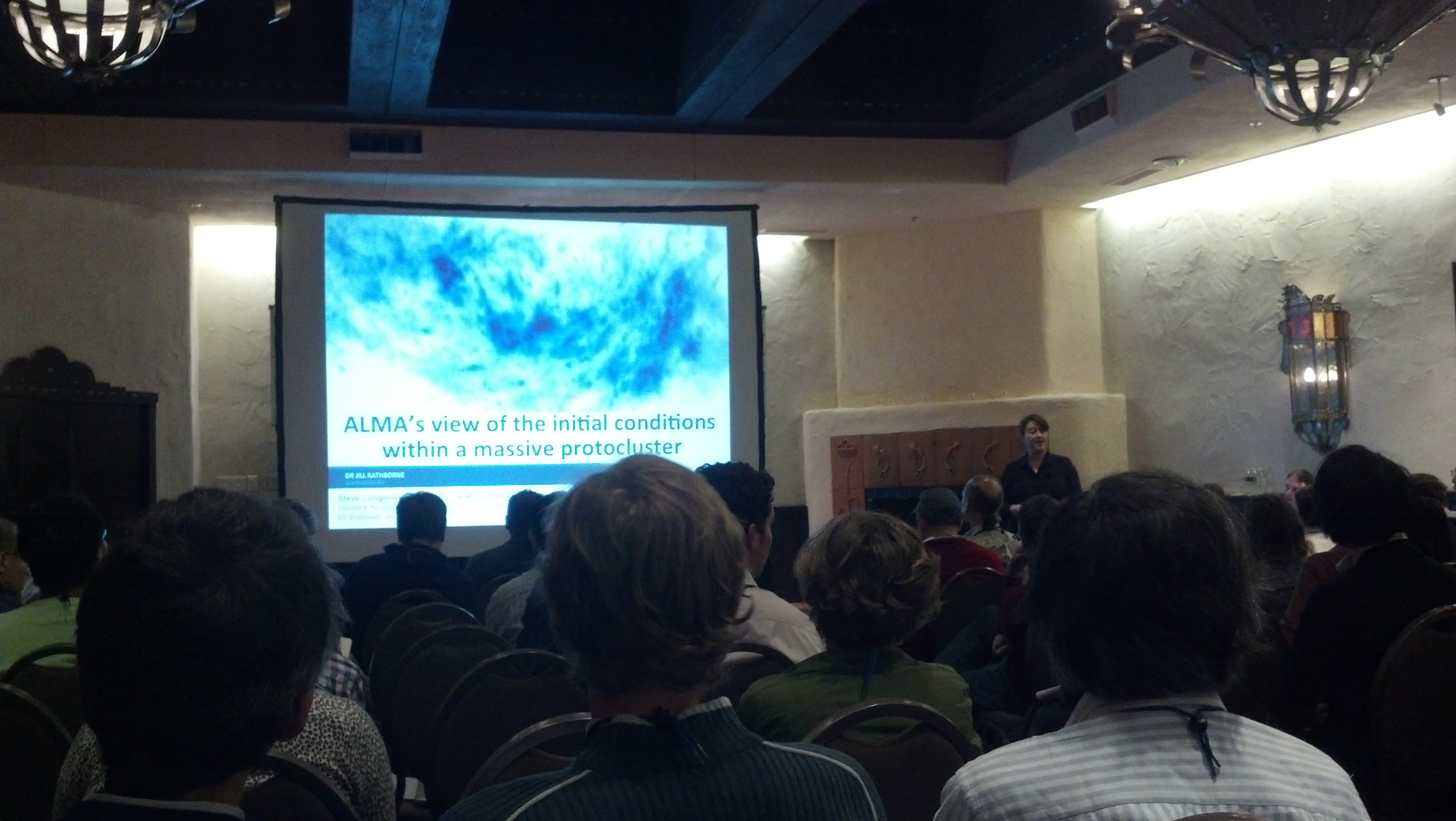
- Why care about cmz young stars?
- lots of them, compared to elsewhere
- fate of clusters?
- IMF, stars affected by environment?
- interaction with SMBH?
- Nuclear cluster
HST image covers CND
spectroscopic census of stars with IFUs
mass limit ~8-10 msun
astrometry great
+ pm 1 km/s
Models of formation
+ in situ? inward migration?
+ circular orbits? eccentric?
messier now
+ sharp radial fall-off favors in-situ models
+ eccentricity rejects in-situ models
+ "wild dump" of molecular material
IMF variation?
+ claimed very top-heavy mass function
- fit luminosity function with bayesian model approach
- modeling required including multiplicity
- stars brighter than brightest possible unless multiples included
- salpeter ruled out at 4-sigma significance
Future?
+ pre-main-sequence should be doable in photometry
+ astrometry, spectra getting better
+ can start to measure multiplicity
- Arches cluster
membership determined via proper motion measurements
+ Stolte 2008, Clarkson 2012
PMS stars in Arches
+ disk fraction ~6%
+ disk evaporation
velocity dispersion measurement ~5 km/s
+ dynamical mass 10^4 msun
+ compare to photometric mass to get IMF
+ IMF can't be normal.
- could be top-heavy or bottom-light
Both arches and quintuplet are moving away from Sgr A* in approximately the
same direction & amplitude
+ track orbits backward
+ Could have common origin (arches & quintuplet)
- may be in outer x2 orbit, maybe x1/x2 intersection
Future:
+ HST: measure tidal radius
+ HST: Measure IMF to 1 msun in outer parts
- Ages
- all seen are young
+ where are the old?
+ nonexistent? Or dispersed?
+ triggering 2-6 Myr ago?
- SMBH interaction
-
- Young stars around nuclei of other galaxies
- M31 core cluster
+ but no gas
Questions
I wasn't allowed to ask this question. Apparently I'm invisible to the chair.
QUESTION: Can you infer which stars are likely binaries via the IMF modeling?
Do spectra velocities agree?
- Q Evidence for distorted IMF. But you see PDMF. Could it be dynamical?
- A: in YNC, solid, but not 100%. How do ejection mechanisms scale with mass?
Unknown. YNC is the best case. Arches, remains a real concern. Assumption
is cluster in equilibrium, may not be true
- Q Fred Lo: What's the SFR?
- A: Sgr B2 is forming a massive star cluster today. Continuous as can be.
No major evidence for stochasticity.
- A from the crowd: 3 orders of magnitude scatter.
- A Gallagher: 0.1-0.01
- Q Gallagher: How does this compare to M82F? Velocity dispersion too small
for luminosity. 40-60 Myr old. Bottom-light IMF
- A: super star cluster similar
- Q: When you consider binaries or multiples, are the evolutionary tracks for
binaries? Maybe all clusters same age.
- A: Didn't have them yet, so singles.
- Q: Correlation between stars and molecular gas?
- A: no.
- Q J Ostriker: Given age of clusters, expect 1000x more of them in the
galaxy. IF you take number of clusters divided by age, do you get too much
mass? If current rate is typical, was there 1000x more in the past?
- A: IF you add them up, no...? Is SFR now consistent with past? not constant SFR
Lower and higher.








